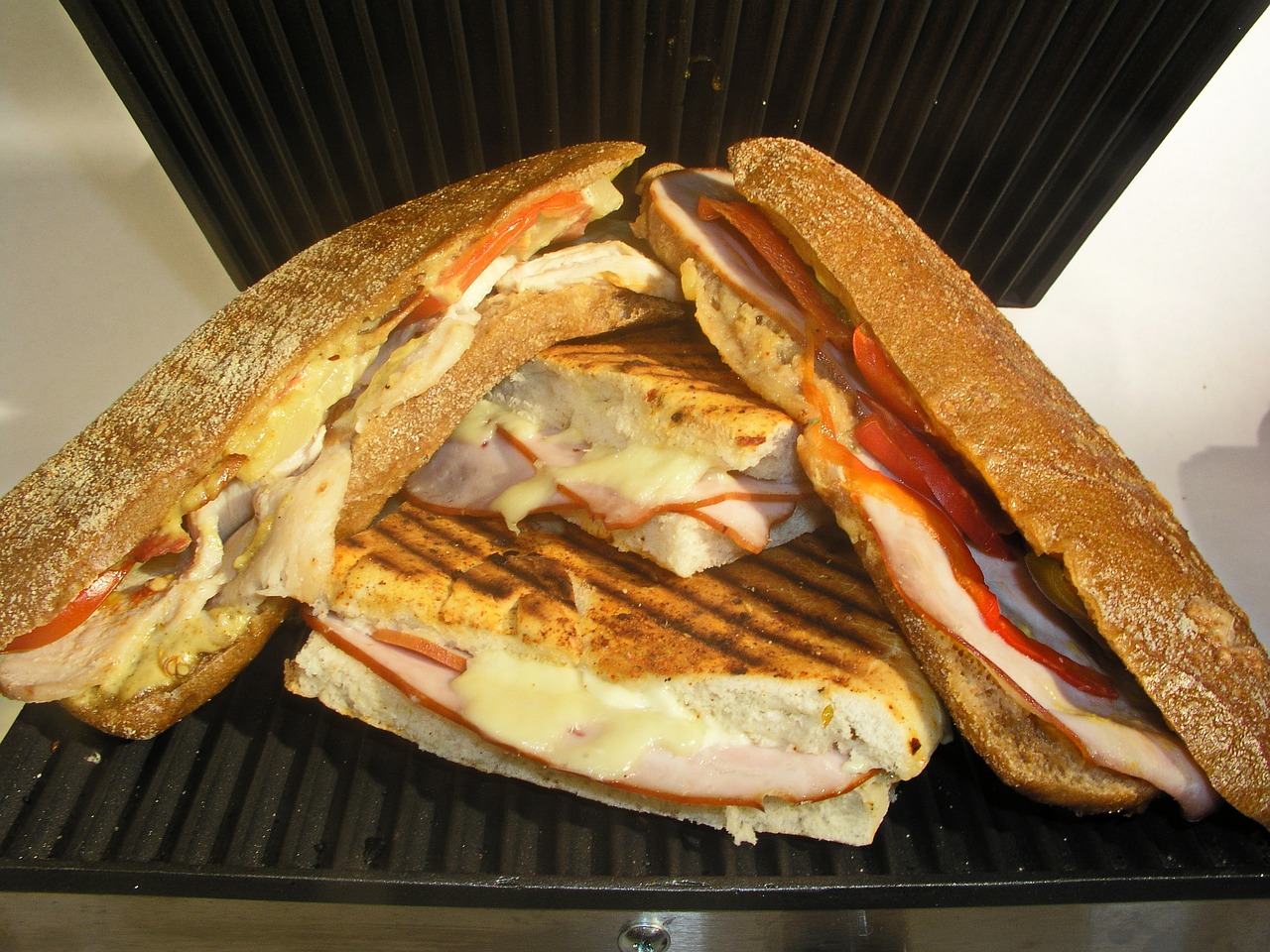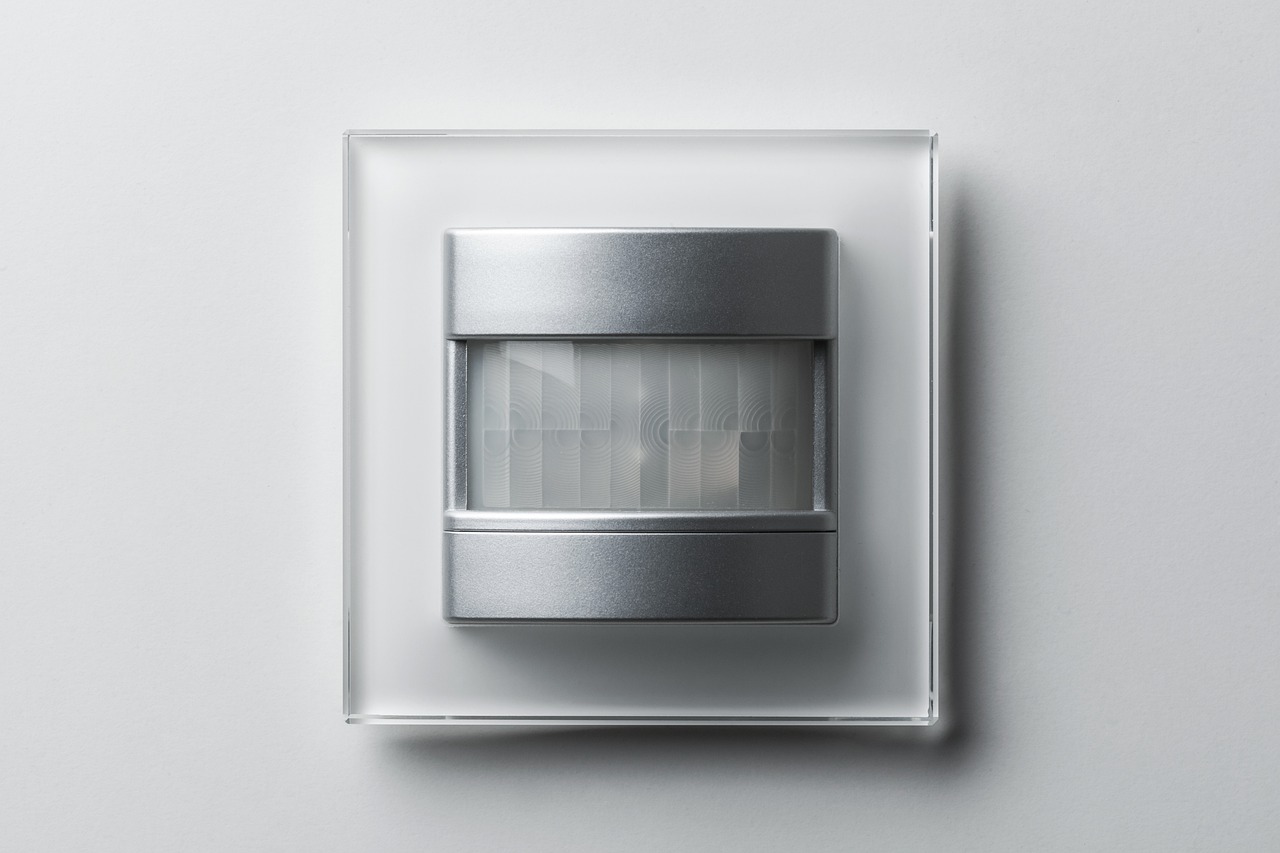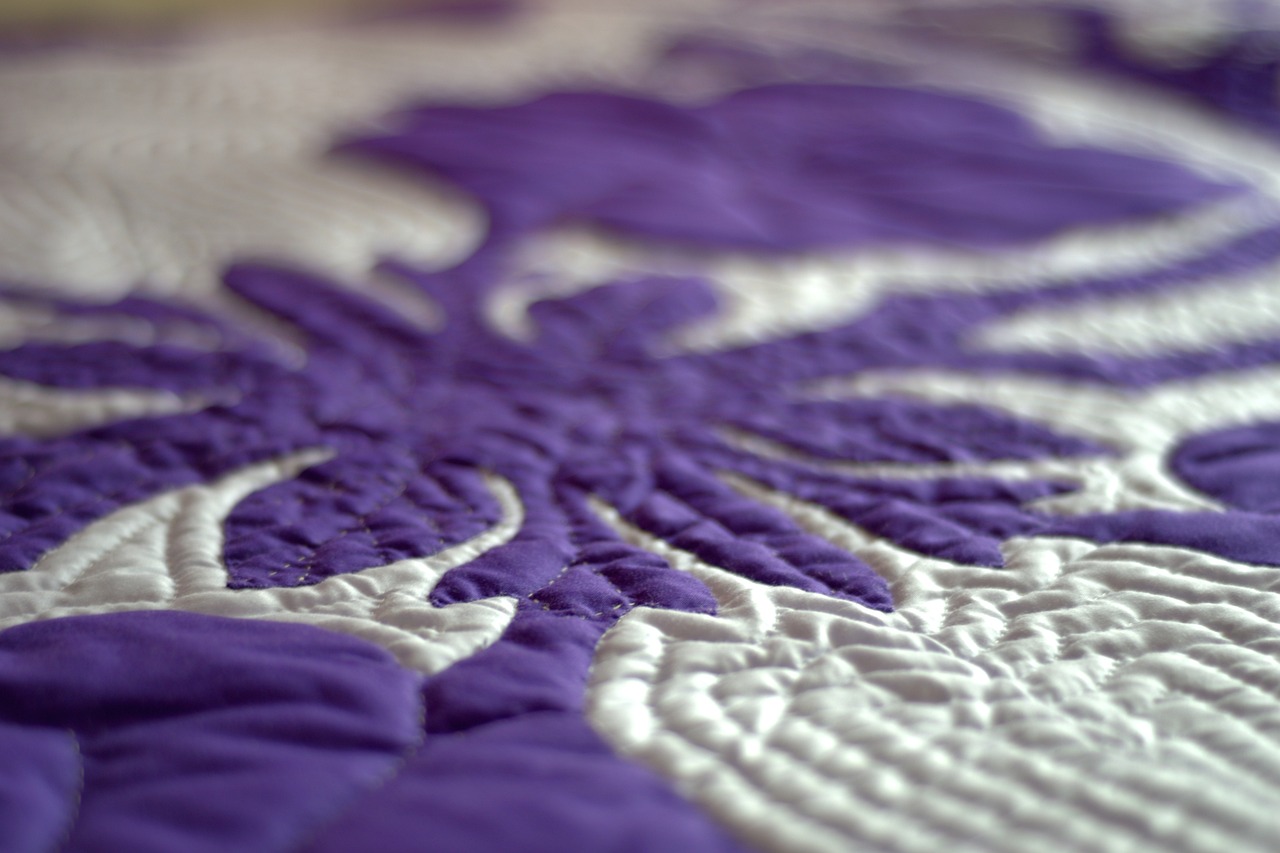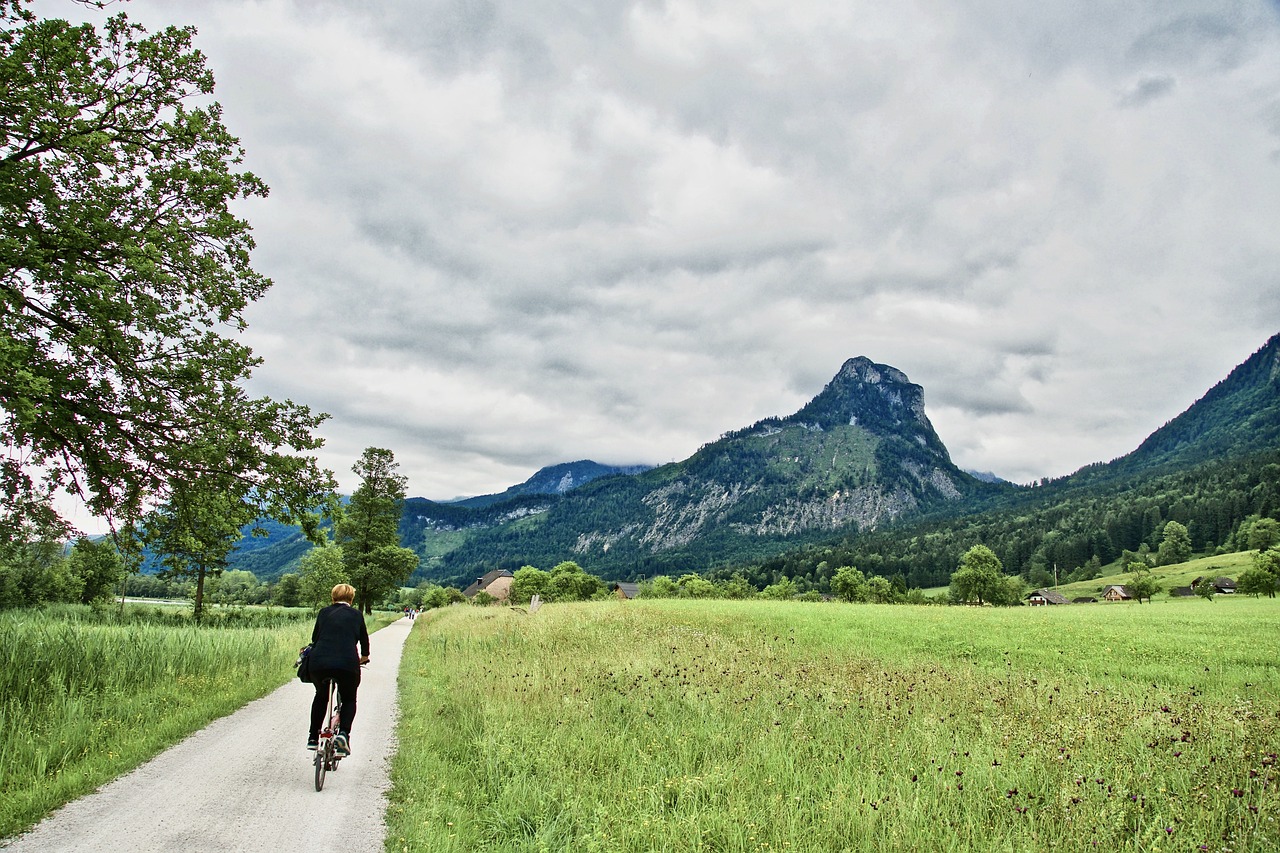The Ultimate Guide to Free Motion Quilting
Welcome to the world of free motion quilting, where creativity knows no bounds and your sewing machine becomes your canvas! This guide provides a comprehensive overview of free motion quilting, covering techniques, tips, and tools to help quilters of all levels master this artistic craft and create stunning quilt designs. Whether you're a seasoned quilter or just starting out, the thrill of free motion quilting can transform your quilting projects into unique masterpieces that showcase your personal style.
At its core, free motion quilting is all about freedom—freedom to express yourself through intricate designs and patterns by moving the fabric freely under the needle. Unlike traditional quilting, where the fabric is fed through the machine in a linear fashion, free motion quilting allows you to create swirls, loops, and other artistic designs that add depth and character to your quilts. Imagine being able to draw with your sewing machine; that’s the beauty of this technique!
The benefits of mastering free motion quilting extend beyond just aesthetics. It encourages personal expression, allowing you to infuse your quilts with your unique flair. Additionally, it can be a therapeutic process, providing a sense of calm and focus as you navigate the fabric with your machine. So, why not dive in and explore this exciting quilting technique?
To successfully execute free motion quilting, having the right tools and equipment is crucial. The tools you'll need can significantly enhance your quilting experience, making the process smoother and more enjoyable. Here’s a quick overview of what you’ll need:
| Tool | Description |
|---|---|
| Sewing Machine | A machine capable of free motion capabilities, typically with a drop feed feature. |
| Free Motion Foot | A specialized foot that allows for better visibility and control while quilting. |
| Threads | High-quality threads in various materials and colors to enhance your designs. |
Selecting a sewing machine equipped for free motion quilting is crucial. You’ll want a machine with a drop feed feature, which allows the feed dogs to be lowered, giving you complete control over the fabric movement. Additionally, look for a machine that offers a wide throat space, allowing you to maneuver larger quilts with ease. Features like adjustable speed settings and a strong motor can also make a significant difference in your quilting experience.
Different feet can significantly impact your quilting results. There are several types of free motion feet available for sewing machines, each designed to facilitate various techniques. For example, a darning foot is perfect for stippling, while a open-toe foot provides better visibility for intricate designs. Understanding the purpose of each foot can help you choose the right one for your quilting style.
The type of thread you use can influence the final look of your quilt. When it comes to free motion quilting, consider using threads that are smooth and have a low lint build-up, as this can prevent tension issues. Popular choices include cotton, polyester, and rayon threads. Each material offers different finishes and textures, allowing you to tailor your quilts to your desired aesthetic. Don’t forget to experiment with colors—sometimes, a bold contrast can make your design pop!
Creating a well-prepared quilt sandwich is vital for successful quilting. This involves layering your quilt top, batting, and backing in a way that ensures stability and ease of movement during quilting. Make sure to smooth out any wrinkles and secure the layers with safety pins or basting spray. A well-prepared quilt sandwich can make all the difference in achieving a polished finish.
Mastering various techniques is key to becoming proficient in free motion quilting. Here are a couple of essential methods that can enhance your skills and creativity:
Stippling and echo quilting are popular free motion techniques that add texture and dimension to your quilts. Stippling involves creating a series of small, curvy lines that flow around your design, while echo quilting involves stitching around a motif at varying distances. Both techniques can elevate your quilt to the next level, making it visually stunning.
Developing your unique quilting designs can set your work apart. Take inspiration from nature, architecture, or even your favorite fabrics. Don’t be afraid to sketch out your ideas before you start quilting; this can help you visualize the final product and make the process smoother.
Even experienced quilters encounter challenges. Here are some common problems and solutions to ensure a smoother quilting experience:
Tension issues can ruin a quilting project. If you notice loose threads or puckering, it’s time to check your tension settings. Adjust the upper and lower tension until you achieve a balanced stitch. Remember, practice makes perfect!
Fabric bunching can disrupt your quilting flow. To prevent this, make sure to guide the fabric gently and evenly as you quilt. Using a larger throat space can also help reduce bunching, especially with larger quilts.
- What is free motion quilting? Free motion quilting is a technique that allows you to move the fabric freely under the needle, creating intricate designs.
- Do I need a special sewing machine for free motion quilting? Yes, a machine with a drop feed feature and a wide throat space is recommended for best results.
- Can I use any type of thread? It's best to use smooth, low-lint threads like cotton, polyester, or rayon for optimal results.

Understanding Free Motion Quilting
Free motion quilting is an incredible technique that allows you to unleash your creativity and create stunning quilt designs. Unlike traditional quilting methods, where the machine moves in a straight line, free motion quilting lets you move the fabric freely under the needle. Imagine painting with thread, where every curve and loop is a brushstroke on your canvas. This method opens up a world of possibilities, enabling you to express your unique style and artistic vision.
One of the most significant benefits of mastering free motion quilting is the level of personal expression it offers. Whether you want to create intricate patterns or simple designs, the beauty of this technique lies in its versatility. You can choose to replicate classic motifs or invent your own, making each quilt a one-of-a-kind masterpiece. As you practice and refine your skills, you'll find that your confidence grows, allowing you to take on more complex projects and push the boundaries of your creativity.
Moreover, free motion quilting can be incredibly therapeutic. Many quilters find that the rhythmic motion of guiding the fabric under the needle is a form of meditation. It allows you to focus on the present moment, letting go of distractions and stress. This connection to the process can lead to a deeper appreciation of your work and a sense of accomplishment as you watch your ideas come to life.
In addition to personal expression and therapeutic benefits, free motion quilting also enhances the overall aesthetic of your quilts. The ability to add texture and dimension through various quilting patterns can elevate a simple quilt top into a stunning piece of art. For instance, stippling can create a soft, quilted background, while echo quilting can add depth and interest to specific areas of your design. The options are virtually limitless, and the only limit is your imagination.
As you embark on your free motion quilting journey, remember that practice is key. Don't be discouraged by initial challenges; every quilter has faced their share of bumps along the way. The more you practice, the more comfortable you'll become with the technique, and soon you'll be able to create beautiful quilts that showcase your style and skills. So, grab your sewing machine, choose your favorite fabric, and let your creativity flow!

Essential Tools and Equipment
When it comes to free motion quilting, having the right tools and equipment is akin to a painter having the best brushes and colors. It’s not just about the fabric; it’s about the entire experience of quilting, which can be greatly enhanced by using quality tools. Whether you're a seasoned quilter or just starting out, understanding what you need can make all the difference in your quilting journey. The essential equipment encompasses various components, including your sewing machine, specialized feet, and threads that can elevate your quilting game.
First and foremost, let's talk about your sewing machine. Not every sewing machine is created equal, especially when it comes to free motion quilting. You need a machine that allows you to drop the feed dogs, giving you the freedom to move the fabric in any direction you desire. Look for a machine with a powerful motor and a wide throat space, which provides ample room for maneuvering larger quilts. Additionally, features like adjustable speed control and a good stitch regulator can significantly improve your quilting precision.
When selecting a sewing machine for free motion quilting, consider the following features:
- Feed Dog Control: Ensure that your machine has the ability to drop its feed dogs for unrestricted fabric movement.
- Throat Space: A larger throat space allows for easier manipulation of bigger quilts.
- Speed Control: Adjustable speed settings help you maintain control over your stitching.
These features will help you achieve the best results in your quilting projects. Investing in a quality machine is essential, as it can save you time and frustration in the long run.
Next up, let’s discuss machine feet. The right foot can make a significant impact on your quilting results. There are various types of free motion feet available, including open-toe feet, darning feet, and even specialty feet designed for specific techniques. The open-toe foot, for instance, provides excellent visibility, allowing you to see your stitching as you go. On the other hand, the darning foot is versatile and great for intricate designs.
Here’s a quick comparison of some popular free motion feet:
| Foot Type | Features | Best For |
|---|---|---|
| Open-Toe Foot | Enhanced visibility | Detailed designs |
| Darning Foot | Versatile for various techniques | General free motion quilting |
| Closed-Toe Foot | Stability for heavier fabrics | Thicker quilts |
Finally, let’s not overlook the importance of thread. The type of thread you choose can drastically affect the final look of your quilt. For free motion quilting, it’s essential to select threads that are not only strong but also have the right weight and finish. Cotton threads are a popular choice due to their durability and ease of use, while polyester threads offer a bit more elasticity, which can be beneficial for certain designs.
When choosing thread, consider the following:
- Material: Cotton or polyester, depending on your project.
- Weight: A medium weight thread (like 40 wt) is usually ideal.
- Color: Choose colors that complement or contrast with your fabric for visual interest.
In summary, having the right tools and equipment for free motion quilting is crucial for unleashing your creativity and achieving stunning results. From your sewing machine to the threads you use, each element plays a vital role in your quilting journey. Equip yourself well, and you'll find that the world of free motion quilting opens up in ways you never imagined!

Choosing the Right Sewing Machine
When it comes to free motion quilting, choosing the right sewing machine can make all the difference between a frustrating experience and a joyful one. Think of your sewing machine as the engine of a high-performance car; without the right engine, you simply won’t achieve the speed and precision you desire. So, what should you look for in a sewing machine that’s equipped for free motion quilting? Let’s dive into some essential features that will elevate your quilting game.
First and foremost, the throat space is a critical factor. A larger throat space allows for more fabric to be maneuvered while quilting, making it easier to create intricate designs without feeling cramped. Ideally, look for machines with at least 9 inches of throat space. This extra room provides you with the freedom to explore your creativity without limitations.
Next, consider the stitch speed. The ability to control how fast your machine stitches is vital for free motion quilting. A machine that offers variable speed settings allows you to slow down when you're working on detailed areas and speed up for larger sections. This feature not only enhances your control but also helps in achieving more consistent stitches.
Another important feature is the drop feed mechanism. This allows you to lower the feed dogs, enabling you to move the fabric freely in any direction. Not all machines have this feature, so it's essential to check before making a purchase. Some machines even come with a free motion quilting foot, which is specifically designed to help you maintain consistent stitch length while moving the fabric. This foot can be a game-changer for beginners and seasoned quilters alike.
Additionally, pay attention to the needle position. A machine that allows you to adjust the needle position can help you achieve more precise stitching, especially when working on intricate patterns. Some machines even have a needle up/down feature, which can be incredibly handy when pivoting or turning your fabric.
In summary, when choosing a sewing machine for free motion quilting, look for:
- Ample throat space for maneuverability
- Variable stitch speed for better control
- Drop feed mechanism to allow free fabric movement
- Free motion quilting foot for consistent stitching
- Adjustable needle position for precision
Investing in the right sewing machine tailored for free motion quilting not only enhances your skill set but also opens up a world of creative possibilities. So, take your time, do your research, and don’t hesitate to test out a few models at your local sewing machine store. After all, your machine is your partner in this artistic journey, and you want to make sure it’s the best fit for you!
Q: Can I use any sewing machine for free motion quilting?
A: While you can technically use any sewing machine, having one with features like a drop feed mechanism and ample throat space will make the process much easier and more enjoyable.
Q: What is the best thread to use for free motion quilting?
A: The best thread depends on your project, but polyester and cotton threads are popular choices due to their strength and versatility. Experiment with different types to see what works best for you.
Q: How do I practice free motion quilting?
A: Start with simple designs on scrap fabric to build your confidence. Gradually move on to more complex patterns as you become comfortable with the technique.
Q: Do I need a special foot for free motion quilting?
A: Yes, a free motion quilting foot is recommended as it helps maintain consistent stitch length and allows you to move the fabric freely.

Machine Feet Options
When it comes to free motion quilting, the right machine foot can make all the difference in the world. Think of your sewing machine foot as the magic wand of your quilting journey; it can either help you create stunning designs or leave you feeling frustrated. There are several options available, each designed to cater to different styles and techniques. Understanding these options will empower you to choose the best foot for your quilting adventures.
One of the most popular choices is the **darning foot**, also known as the free motion foot. This foot is specifically designed for free motion quilting, allowing you to move the fabric freely in any direction. The open toe design offers a clear view of your stitching, making it easier to see your progress and adjust as needed. If you want to explore intricate designs, the darning foot is your best friend.
Another great option is the **spring-loaded free motion foot**. This foot has a spring mechanism that helps maintain consistent pressure on the fabric, which can be particularly beneficial when working with thicker materials or multiple layers. It allows for smooth movement and can help prevent skipped stitches, making it an excellent choice for quilters looking to achieve a flawless finish.
For those who enjoy a bit of versatility, consider the **walking foot**. While it’s not strictly a free motion foot, it can be used for quilting in a straight line or gentle curves. The walking foot has feed dogs that move the top layer of fabric in sync with the bottom layer, preventing fabric bunching and shifting. This option is perfect for beginners who are still mastering the art of free motion quilting.
To help you decide which foot is right for you, here’s a quick comparison of the most common machine feet options:
| Foot Type | Best For | Key Features |
|---|---|---|
| Darning Foot | Intricate free motion designs | Open toe for visibility, allows fabric movement in any direction |
| Spring-Loaded Free Motion Foot | Thicker fabrics and multiple layers | Consistent pressure, reduces skipped stitches |
| Walking Foot | Straight line quilting and gentle curves | Syncs fabric layers, prevents bunching |
Before making a purchase, it's essential to check compatibility with your sewing machine. Not all feet fit every machine, so consulting your machine’s manual or a knowledgeable salesperson can save you time and money. Additionally, many manufacturers offer universal attachments that can fit various models, providing more flexibility in your quilting toolkit.
Ultimately, the right machine foot can enhance your quilting experience, allowing you to express your creativity with ease. Don’t hesitate to experiment with different feet to find the one that feels most comfortable and effective for your style. Remember, quilting is as much about personal expression as it is about technique, so choose the tools that inspire you!
- What is the difference between a darning foot and a walking foot? The darning foot is designed for free motion quilting, allowing for movement in any direction, while the walking foot is used for straight line quilting and prevents fabric shifting.
- Can I use a regular foot for free motion quilting? While it's possible, using a specialized free motion foot will yield better results and allow for more intricate designs.
- How do I know if my foot is compatible with my sewing machine? Always check your machine’s manual or consult with your dealer to ensure compatibility before purchasing a new foot.

Recommended Threads for Quilting
When it comes to free motion quilting, the type of thread you choose can make a world of difference. Not only does it affect the appearance of your quilt, but it also impacts the durability and ease of your quilting process. So, what should you consider when selecting your threads? Let's dive into the essential factors!
First off, thread material is crucial. You’ll typically find threads made from cotton, polyester, or a blend of both. Cotton threads are renowned for their natural feel and matte finish, making them a popular choice among quilters who want a classic look. On the other hand, polyester threads are stronger and offer a bit more stretch, which can be beneficial for certain quilting techniques. Blended threads can provide the best of both worlds, offering durability along with a soft touch.
Next, consider the thread weight. The weight of the thread directly influences the stitch appearance and can change the overall look of your quilt. Thicker threads can create bold, visible stitches that stand out, while thinner threads provide a more delicate finish. A common weight for quilting threads is 40-weight, which strikes a balance between visibility and subtlety. However, don’t shy away from experimenting with 30-weight for a thicker line or 50-weight for finer details.
Color choice is another essential aspect. The thread color can either complement or contrast with your fabric, enhancing the overall design. For a subtle look, choose a thread color that closely matches your fabric. If you're feeling adventurous, go for contrasting colors to create a striking effect. Remember, the right thread color can bring your quilt to life!
To help you navigate through your options, here’s a quick reference table summarizing the recommended threads:
| Thread Type | Material | Weight | Best Use |
|---|---|---|---|
| Cotton | 100% Cotton | 40-weight | Traditional quilts, soft finish |
| Polyester | 100% Polyester | 40-weight | Durable quilts, vibrant colors |
| Blend | Cotton/Polyester | 40-weight | Versatile use, combines benefits |
In conclusion, selecting the right thread for your free motion quilting projects can significantly enhance your results. Whether you prefer cotton for its classic appeal or polyester for its strength, understanding these key factors will help you make an informed decision. So, stock up on various threads and let your creativity flow!
Q: What weight thread should I use for free motion quilting?
A: A common choice is 40-weight thread, but you can experiment with 30-weight for thicker lines or 50-weight for finer details.
Q: Can I use any sewing machine thread for quilting?
A: While you can use various threads, it's best to choose threads designed for quilting to ensure optimal results.
Q: How do I choose the right color thread for my quilt?
A: Choose a thread color that complements your fabric for a subtle look or opt for contrasting colors to make your design pop!

Preparing Your Quilt Sandwich
Creating a well-prepared quilt sandwich is vital for successful quilting. Think of your quilt sandwich as the foundation of a beautiful house; if the base isn’t solid, the entire structure may crumble. The quilt sandwich consists of three essential layers: the quilt top, batting, and backing. Each layer plays a crucial role in the overall look and feel of your quilt, so taking the time to prepare them correctly will pay off in the long run.
First, let’s talk about the quilt top. This is the decorative layer that showcases your creativity and style. Ensure that your quilt top is flat and free from wrinkles. Ironing it out beforehand can make a significant difference. Next comes the batting, which provides warmth and thickness to your quilt. When selecting batting, consider the material—options include cotton, polyester, or a blend. Each type of batting has its own unique properties, so choose one that complements your project. For example, cotton batting is breathable and gives a lovely drape, while polyester is durable and resistant to creasing.
Now, onto the backing fabric. This layer is often overlooked, but it’s just as important as the others. Choose a backing that not only matches the aesthetic of your quilt top but is also wide enough to accommodate the quilt’s dimensions. A good rule of thumb is to add an extra 4-6 inches to each side of the quilt top’s measurements to ensure you have enough fabric to work with.
Once you have all your layers ready, it’s time to assemble your quilt sandwich. Here’s a simple step-by-step process to guide you:
- Lay down the backing: Place the backing fabric right side down on a flat surface. Smooth out any wrinkles or creases.
- Add the batting: Place the batting on top of the backing, ensuring it is centered and smooth.
- Top it off: Finally, lay your quilt top right side up on top of the batting. Make sure everything is aligned properly.
After layering, it’s crucial to secure your quilt sandwich. You can use safety pins, basting spray, or even hand-basting stitches to keep the layers together. Just remember, the more secure your layers are, the easier it will be to quilt without shifting. Once your quilt sandwich is secure, you’re ready to dive into the exciting world of free motion quilting!
Q: What is a quilt sandwich?
A: A quilt sandwich is the layered structure of a quilt, consisting of the quilt top, batting, and backing fabric.
Q: How do I choose the right batting for my quilt?
A: The choice of batting depends on your desired quilt weight, warmth, and texture. Cotton is breathable, while polyester is more durable.
Q: Can I use any fabric for the backing?
A: Yes, but it’s best to choose a fabric that complements your quilt top and is wide enough to accommodate the quilt's dimensions.
Q: How do I prevent my quilt layers from shifting?
A: Secure your quilt sandwich with safety pins, basting spray, or hand-basting stitches to keep the layers in place while quilting.

Techniques to Master
When it comes to free motion quilting, mastering various techniques is essential for unleashing your creativity and enhancing your skills. Think of it like learning to ride a bike; at first, it may seem daunting, but with practice, you’ll find your rhythm and enjoy the ride. In this section, we’ll dive into some fundamental techniques that can elevate your quilting game, making your projects not just beautiful, but also uniquely yours.
One of the first techniques you should get comfortable with is stippling. This method involves creating a series of curvy lines that loop and swirl across your quilt. It’s like doodling with a sewing machine! The beauty of stippling is its versatility; it can fill spaces, add texture, and provide a lovely contrast to more structured designs. To get started, practice moving your fabric smoothly under the needle while maintaining an even stitch length. Remember, the key is to keep your movements fluid and relaxed, akin to a dance.
Another popular technique is echo quilting. This technique involves stitching lines that follow the contours of your original design, creating a series of concentric shapes. Imagine ripples in a pond; each echo radiates out from the source, adding depth and dimension to your quilt. To master echo quilting, start with a simple shape, like a circle or a flower, and practice stitching lines that gradually expand outward. This method not only enhances the visual appeal but also helps you develop control over your sewing machine.
As you gain confidence with these foundational techniques, you may feel inspired to create custom designs. This is where your imagination can truly take flight! Drawing inspiration from nature, art, or even your favorite patterns can help you develop unique quilting designs that reflect your personal style. Don’t be afraid to sketch out ideas on paper before translating them to fabric. It’s like creating a blueprint for your masterpiece! Experiment with different shapes and motifs, and remember, practice makes perfect.
To help you visualize these techniques, here’s a simple comparison table of stippling and echo quilting:
| Technique | Description | Best For |
|---|---|---|
| Stippling | Curvy lines that create a flowing design. | Filling spaces, adding texture. |
| Echo Quilting | Stitching lines that follow the shape of a design. | Creating depth and dimension. |
As you explore these techniques, remember that free motion quilting is a journey, not a destination. Embrace the learning process, enjoy the creativity, and don’t hesitate to experiment. Each stitch you take is a step toward mastering this beautiful art form!
Q: How long does it take to master free motion quilting?
A: Mastery varies from person to person. With consistent practice, many quilters see significant improvement within a few months.
Q: Do I need a special sewing machine for free motion quilting?
A: While a sewing machine with a free motion capability is ideal, many standard machines can also be adapted for free motion quilting with the right foot and settings.
Q: Can I use any type of fabric for free motion quilting?
A: Yes, but it's best to start with cotton fabric as it is easier to handle and produces great results. As you become more comfortable, you can experiment with other materials.
Q: What should I do if I encounter tension issues?
A: Tension problems can often be resolved by adjusting the tension settings on your machine. Refer to your machine's manual for guidance, and don't hesitate to practice on scrap fabric.

Stippling and Echo Quilting
When it comes to free motion quilting, stippling and echo quilting are two of the most popular techniques that quilters often turn to. These methods not only add a stunning visual appeal to your quilts but also provide a wonderful opportunity for personal expression. Imagine the sensation of gliding your sewing machine foot over the fabric, creating intricate patterns that dance across the quilt surface like a gentle breeze. Sounds exhilarating, right? Let’s dive into these techniques and explore how to master them!
Stippling is characterized by its meandering, free-flowing design that creates a sense of movement and texture. The beauty of stippling lies in its simplicity; you don’t need to follow a specific pattern. Instead, you can let your creativity run wild! To get started, it’s essential to maintain a consistent speed and pressure on the fabric while moving it under the needle. Think of it as a dance where you lead the fabric in a rhythm that feels natural to you. The result? A beautifully textured surface that adds depth to your quilt.
On the other hand, echo quilting involves stitching around a shape or design, creating a series of concentric lines that radiate outward. This technique is perfect for enhancing specific elements of your quilt, like appliqué or decorative stitching. By echoing around these features, you can draw attention to them while simultaneously adding a layered look. It’s like framing a beautiful picture—your quilt becomes a canvas where every detail shines through.
To master these techniques, it's helpful to practice on scraps before diving into your main project. Here are some tips to keep in mind:
- Start Slow: Begin at a slower speed to develop a sense of control over your movements.
- Use a Quilting Foot: A free motion quilting foot will allow you to move the fabric freely without the presser foot getting in the way.
- Practice, Practice, Practice: The more you practice, the more confident you’ll become. Don’t be afraid to experiment with different designs!
Both stippling and echo quilting can take your quilting projects to new heights. They’re not just techniques; they’re a way to infuse your personality into your work. As you create, remember that every stitch is a reflection of your creativity and passion. So grab your sewing machine, and let those stitches flow!

Creating Custom Designs
When it comes to free motion quilting, one of the most exciting aspects is the opportunity to create custom designs that reflect your unique style and personality. Imagine transforming a simple quilt into a masterpiece that tells a story or captures a moment in time. The journey to designing your own patterns can be both thrilling and rewarding, allowing you to explore your creativity in ways you never thought possible.
To get started on your path to creating custom designs, it's essential to first gather inspiration. Look around you—nature, architecture, and even everyday objects can spark ideas for your quilting patterns. Consider keeping a sketchbook where you can jot down your thoughts and doodles. This way, you can capture fleeting ideas before they slip away. You might find that a leaf's shape or the lines of a building can translate beautifully into a quilting design.
Once you have some inspiration, it's time to translate those ideas into quilting patterns. Start by drawing your designs on paper. This doesn’t have to be perfect; think of it as a rough draft. You can use graph paper to help keep your designs proportional. As you draw, consider the following elements:
- Scale: How large do you want your designs to be? Larger designs may require more intricate stitching, while smaller patterns can be simpler.
- Repetition: Will your design repeat across the quilt, or will it be a one-off feature? Repeat patterns can create a cohesive look.
- Flow: Think about how the design flows with the quilt. Does it complement the overall theme, or does it stand out in a bold way?
After sketching your designs, it's time to practice them on fabric. Choose a scrap piece of fabric and start free motion quilting your pattern. This practice will help you understand how your design translates from paper to fabric. Remember, it’s all about trial and error. Don’t be discouraged if your first attempts don’t turn out perfectly; each stitch is a step toward improvement.
As you gain confidence, consider using digital tools to enhance your design process. There are various quilting software programs available that allow you to create and visualize your designs on a computer. This can be particularly helpful for more complex patterns, as you can easily adjust and refine your ideas before committing them to fabric.
Finally, don’t forget to embrace collaboration and community. Join quilting groups, both online and offline, to share your designs and get feedback. Engaging with fellow quilters can provide fresh perspectives and valuable tips that can elevate your work. Plus, you might discover new techniques or tools that you hadn’t considered before!
In summary, creating custom designs in free motion quilting is an adventure that combines inspiration, practice, and community. By allowing your creativity to flow and experimenting with different ideas, you can craft stunning quilts that are truly one-of-a-kind. So grab your sewing machine, unleash your imagination, and start designing your next quilting masterpiece!
Q: How do I find inspiration for my custom quilt designs?
A: Inspiration can be found everywhere! Nature, architecture, and art can all provide ideas. Keep a sketchbook to jot down your thoughts and doodles.
Q: What tools can I use to create custom designs?
A: You can use traditional tools like graph paper and sketchbooks, or explore digital quilting software for more complex designs.
Q: Is it necessary to practice my designs before quilting them on a project?
A: Yes! Practicing on scrap fabric helps you understand how your designs translate from paper to fabric and builds your confidence.
Q: How can I improve my quilting skills?
A: Join quilting groups, take classes, and practice regularly. Engaging with the quilting community can also provide valuable feedback and tips.

Troubleshooting Common Issues
Even the most seasoned quilters face challenges when diving into the world of free motion quilting. It's almost like trying to dance with a partner who has two left feet; sometimes, things just don’t go as planned! But fear not! By understanding common issues and their solutions, you can keep your quilting journey smooth and enjoyable. Let's explore some of the most frequent problems quilters encounter and how to troubleshoot them effectively.
One of the most frustrating issues is tension problems. Imagine spending hours creating a beautiful quilt, only to find that the stitches are uneven or the thread is breaking. This can be caused by several factors, including the type of thread used, the needle size, or even the sewing machine settings. To address tension issues, first, check your machine's manual for the recommended tension settings for the type of thread you're using. If the top thread is too tight, loosen the tension dial. Conversely, if the bobbin thread is too tight, adjust the bobbin tension. It may take a bit of trial and error, but achieving the perfect tension is crucial for a flawless finish.
Another common hiccup is fabric bunching. Picture this: you’re gliding your fabric under the needle, and suddenly, it starts to bunch up like a wrinkled shirt. This can happen when the fabric is not properly supported or if you’re moving it too quickly. To prevent this, always ensure your quilt sandwich is well-prepared, with the top, batting, and backing layers aligned correctly. Additionally, use your hands to guide the fabric gently, allowing it to flow smoothly without forcing it through the machine. If you find that the fabric is still bunching, consider adjusting the feed dogs on your machine or using a walking foot for more control.
Here’s a quick reference table summarizing some common issues and their solutions:
| Issue | Possible Causes | Solutions |
|---|---|---|
| Tension Problems | Incorrect tension settings, thread type, needle size | Adjust tension settings, check thread compatibility, use the right needle |
| Fabric Bunching | Improper support, moving fabric too quickly | Ensure proper quilt sandwich preparation, guide fabric smoothly |
| Skipped Stitches | Dirty needle, incorrect needle type, thread issues | Clean or replace needle, check thread quality, adjust machine settings |
| Uneven Stitching | Inconsistent speed, tension issues | Practice speed control, adjust tension settings |
Lastly, don’t underestimate the power of practice and patience. Just like any craft, free motion quilting requires time to master. If you find yourself frustrated, take a break, step back, and come back with fresh eyes. Remember, every mistake is a stepping stone to improvement. So, embrace the learning process, and soon you’ll be creating stunning, intricate designs with ease!
Now that we’ve tackled some common issues, let’s address a few frequently asked questions that can further enhance your free motion quilting experience.
- What is free motion quilting? Free motion quilting is a technique where the quilter moves the fabric freely under the needle, allowing for creative and intricate designs.
- Do I need a special sewing machine for free motion quilting? While not mandatory, having a sewing machine with a drop feed feature and the ability to adjust stitch length can significantly enhance your experience.
- Can I use any type of thread for free motion quilting? It’s best to use high-quality threads designed for quilting. Cotton and polyester threads are popular choices, but always check compatibility with your machine.
- How do I practice free motion quilting? Start with practice sandwiches made from fabric scraps. Focus on different patterns and movements, gradually increasing complexity as you gain confidence.

Dealing with Tension Problems
Tension issues can be a quilter's worst nightmare. Imagine spending hours piecing together a beautiful quilt, only to find that the stitches are either too tight or too loose, ruining your hard work. This is why understanding how to manage tension is crucial for free motion quilting success. The good news is that with a little knowledge and some troubleshooting techniques, you can conquer these challenges and achieve that flawless finish you desire.
First off, it's essential to know what tension is in the context of quilting. Tension refers to how tightly or loosely the thread is pulled through the fabric as you sew. If the tension is too tight, you may notice puckering or even thread breakage. Conversely, if the tension is too loose, your stitches may look sloppy, and the thread could become tangled. So, how do you find that perfect balance? Let's dive into some practical tips.
Start by checking your machine's tension settings. Most sewing machines have a dial that allows you to adjust the tension. A good rule of thumb is to begin with the manufacturer's recommended settings and make adjustments based on your specific project. For free motion quilting, a tension setting between 3 and 5 usually works well, but don’t hesitate to experiment. After all, quilting is an art form, and every artist has their unique style!
Another aspect to consider is the type of thread you're using. Different threads have varying thicknesses and textures, which can affect tension. For instance, if you're using a thicker thread, you might need to loosen the tension slightly to accommodate it. Additionally, ensure that your thread is of good quality and not frayed or damaged, as this can also lead to tension problems.
When you encounter tension issues, it’s wise to conduct a test run. Before starting on your quilt, take a scrap piece of fabric and sew a few lines. This will help you see how the tension is behaving without risking your main project. If you notice any issues, adjust the tension dial and test again. It's a simple yet effective way to ensure you're on the right track.
Lastly, don’t overlook the importance of your bobbin. A poorly wound bobbin can cause all sorts of tension problems. Make sure your bobbin is wound evenly and inserted correctly. If you’re using a drop-in bobbin, ensure it’s seated properly, as this can significantly impact your stitching quality.
To summarize, here are some key points to remember when dealing with tension problems:
- Check and adjust your machine's tension settings regularly.
- Use quality thread that suits your quilting needs.
- Conduct test runs on scrap fabric before starting your project.
- Ensure your bobbin is wound and inserted correctly.
By keeping these tips in mind, you’ll be well-equipped to tackle tension issues head-on. Remember, every quilter faces challenges, but with patience and practice, you can turn those frustrating moments into learning experiences. Happy quilting!
Q: What should I do if my stitches are too tight?
A: If your stitches are too tight, try loosening the tension dial on your sewing machine. Additionally, check your thread and bobbin to ensure they are properly wound and inserted.
Q: How can I prevent fabric bunching while quilting?
A: To prevent fabric bunching, make sure your quilt sandwich is layered evenly. Use a walking foot for straight lines and keep a steady pace while sewing. If bunching occurs, stop and readjust the fabric before continuing.
Q: Is it normal to have to adjust tension frequently?
A: Yes, it’s quite normal to adjust tension based on the fabric and thread you’re using. Different materials may require different tension settings, so don’t hesitate to make adjustments as needed.

Preventing Fabric Bunching
One of the most frustrating issues that free motion quilters face is fabric bunching. This pesky problem can disrupt your flow and lead to unsightly results, making your beautiful quilt look less than perfect. So, how can you keep your fabric smooth and under control while you quilt? Let’s dive into some strategies that will help you maintain a polished finish.
First and foremost, it's essential to prepare your quilt sandwich properly. A well-layered quilt consisting of the quilt top, batting, and backing can significantly reduce the chances of fabric bunching. Ensure that your backing fabric is larger than your quilt top and that the batting is cut to the same size as the backing. This extra fabric will allow for some movement without causing bunching.
Next, consider your sewing speed. If you find yourself zooming through your quilting, it can lead to uneven tension and fabric movement. Instead, try to maintain a steady, moderate speed. This gives you better control over your fabric and allows you to adjust as needed. Remember, it’s not a race; the goal is to create a masterpiece!
Another effective technique is to use a free motion quilting foot that allows for better visibility and control. These specialized feet help to guide the fabric smoothly under the needle, reducing the likelihood of bunching. If you’re unsure which foot to use, consult your sewing machine's manual or ask at your local quilt shop for recommendations.
Additionally, keeping your fabric taut as you quilt is vital. You can do this by gently pulling the fabric as you move it under the needle. However, be careful not to pull too hard, as this can cause tension issues. Instead, aim for a balanced approach where the fabric is snug but not overly tight.
Finally, if you find that fabric bunching continues to be a problem, consider using quilt clips or safety pins to secure your layers before you start quilting. This extra step can help keep everything in place, allowing you to focus on your stitching rather than wrestling with your fabric.
In summary, preventing fabric bunching is all about preparation, control, and technique. By taking the time to layer your quilt properly, adjusting your sewing speed, using the right tools, and maintaining tension, you can create stunning quilts without the frustration of bunching. Remember, every quilter faces challenges, but with practice and patience, you can overcome them!
- What is the best way to prepare my quilt sandwich?
Make sure your backing is larger than the quilt top and that the batting is cut to the same size as the backing. Smooth out any wrinkles as you layer. - How can I improve my free motion quilting speed?
Practice is key! Start slow and gradually increase your speed as you gain confidence and control over your fabric. - What type of foot should I use for free motion quilting?
A free motion quilting foot that allows for better visibility and control is recommended. Check your sewing machine manual for compatible options. - How do I know if my tension is correct?
Test your stitching on a scrap piece of fabric. The stitches should look balanced on both the top and bottom sides.
Frequently Asked Questions
- What is free motion quilting?
Free motion quilting is a technique that allows quilters to move the fabric freely under the needle, creating intricate and unique designs. Unlike traditional quilting, where the fabric is moved in straight lines, free motion quilting gives you the freedom to draw and stitch any pattern you desire, making it an exciting way to express your creativity.
- Do I need a special sewing machine for free motion quilting?
While you can use many sewing machines for free motion quilting, having a machine specifically designed for this purpose can make a big difference. Look for features such as a drop feed mechanism, which allows the fabric to move freely, and a strong motor that can handle the thickness of quilt layers.
- What type of foot should I use for free motion quilting?
There are several types of machine feet designed for free motion quilting, including darning feet and free motion quilting feet. Each foot has its own unique design that affects how the fabric is fed through the machine. It's essential to choose the right foot that works best for your machine and your quilting style.
- How do I prepare my quilt sandwich?
Preparing a quilt sandwich involves layering your quilt top, batting, and backing fabric. Start by laying your backing fabric right side down, followed by the batting, and then place your quilt top right side up. Smooth out any wrinkles and pin or baste the layers together to ensure they stay in place while you quilt.
- What are some common free motion quilting techniques?
Some popular techniques include stippling and echo quilting. Stippling creates a meandering pattern that adds texture, while echo quilting involves stitching around a shape or design to create a series of lines that enhance the visual interest of your quilt. Both techniques can elevate your quilting game!
- How can I prevent tension problems while quilting?
Tension issues can be frustrating, but they are often easy to fix. Start by checking your machine's tension settings and adjusting them as needed. Make sure your thread is compatible with your fabric and that your bobbin is wound correctly. Regularly testing your stitches on a scrap piece of fabric can help you identify any tension problems before you start on your quilt.
- What should I do if my fabric bunches while quilting?
Fabric bunching can disrupt your flow, but there are ways to manage it. Ensure that you're using the right presser foot and that your quilt layers are adequately prepared. Move slowly and steadily while quilting, and use your hands to guide the fabric gently. If bunching occurs, stop and adjust your fabric before continuing.



















